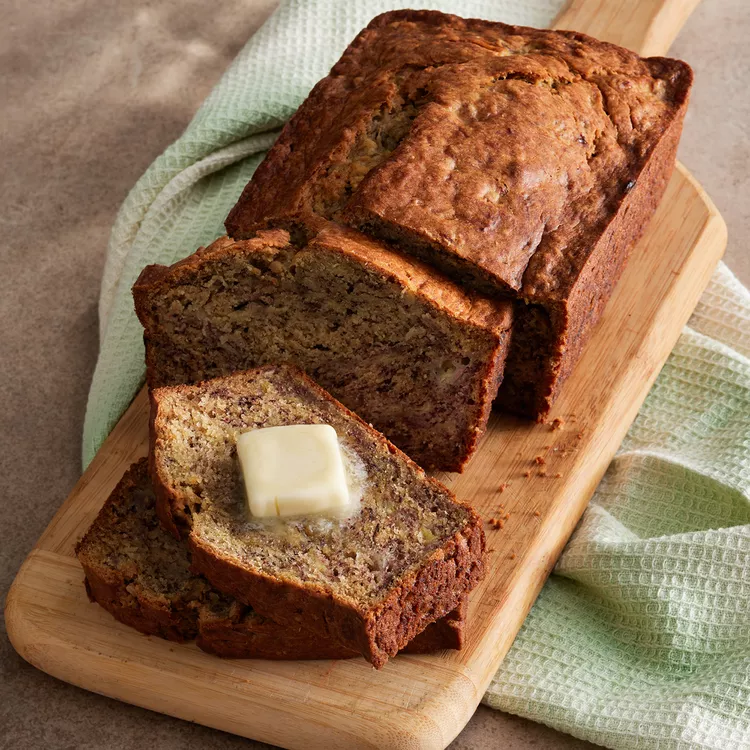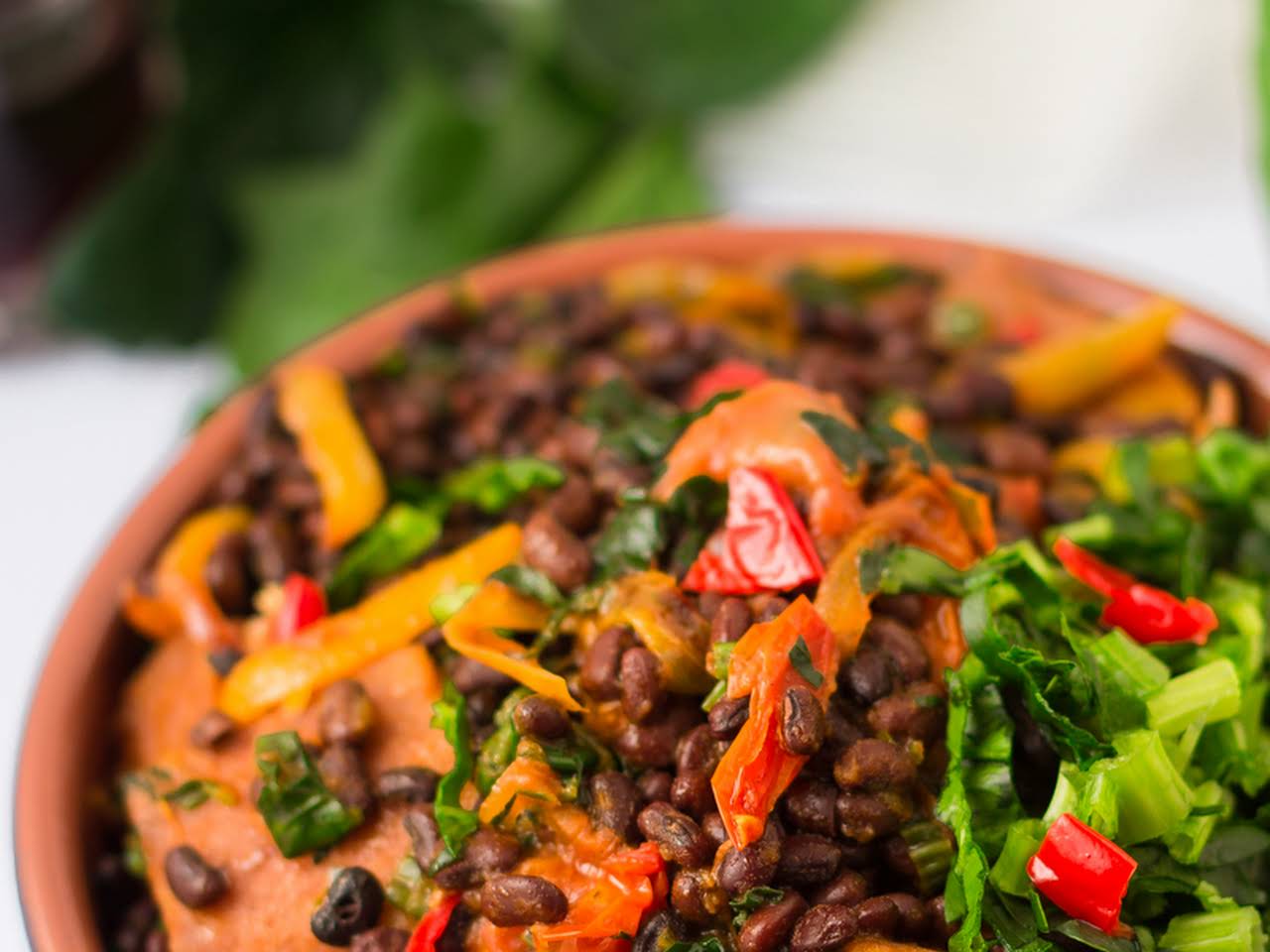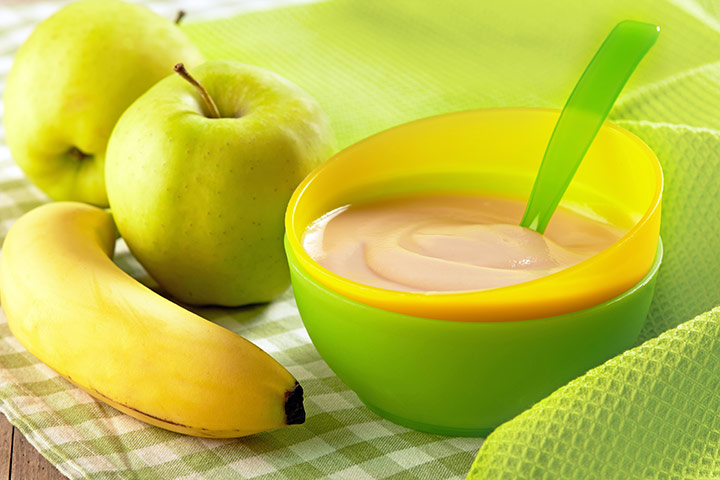FOOD
Try This Easy Best Banana Bread Recipe
Published
1 year agoon
By
wpadminee
This banana bread recipe boasts a reputation for creating the most delectable and moist loaf, bursting with intense banana flavour. It eliminates the need to settle for a less flavorful version. Many have tried and loved this recipe, raving that it surpasses all others! Toasted or untoasted, this bread is guaranteed to be a crowd-pleaser.
This recipe isn’t just another banana bread contender; it’s a reigning champion! Users have consistently praised its moist texture, delicious taste, and abundance of banana flavour it delivers. This bread has the potential to become your personal go-to banana bread recipe, forever changing your breakfast and snack game.
Now, let’s get into the real business with the banana bread recipe!
Ingredients
- 2 cups all-purpose flour
- 1 teaspoon baking soda
- ¼ teaspoon salt
- ¾ cup brown sugar
- ½ cup butter
- 2 large eggs, beaten
- 2 ⅓ cups mashed overripe bananas
Banana Bread Ingredients
The beauty of this banana bread recipe is that it likely uses ingredients you already have on hand! But no worries if you’re missing a few things. Here’s a quick grocery list to complete your baking adventure:
- Flour: This all-purpose flour provides the structure that holds your banana bread together.
- Baking soda: This magic ingredient acts as a leavener, ensuring your bread rises beautifully in the oven.
- Salt: A sprinkle of salt adds depth to the overall flavour profile without making the final product taste salty.
- Butter: Softened butter adds richness, moisture, and that irresistible flavour we all love in banana bread.
- Brown sugar: This ingredient not only sweetens the bread but also adds a touch of warmth for a complex taste.
- Eggs: Eggs play a crucial role as a binding agent, holding all your ingredients together to create a cohesive batter.
- Bananas: And of course, you can’t forget the star of the show—the bananas! Make sure to choose ripe or even overripe bananas for the most intense banana flavour.
:max_bytes(150000):strip_icc():format(webp)/banana-banana-bread_articlebanana_banana-2000-79d74827e4ce4b28807e08f41d9bdf10.jpg)
How to Make Banana Bread
The complete recipe with detailed instructions awaits you below, but here’s a sneak peek at the baking process:
-
Dry Ingredients Unite: We’ll start by gathering all the dry ingredients, like flour and baking soda, and whisking them together in a bowl.
-
Creamy Magic: In another bowl, butter and sugar get creamed together until light and fluffy. This is where the magic happens!
-
Wet Stars Join the Party: Eggs and mashed bananas, the stars of the show, are then introduced to the creamy butter and sugar mixture.
-
Bring it All Together: The wet mixture gets gently folded into the dry ingredients, creating a cohesive batter for your delicious banana bread.
-
Baking Time: The batter is then poured into a prepared loaf pan and baked in a preheated oven. But here’s the secret to moist perfection: this recipe uses butter, eggs, and brown sugar (which adds more moisture than white sugar), along with the natural moisture from the mashed bananas. Proper storage is key; details on that are included in the full recipe to lock in all that moist goodness.
The banana bread should be perfectly baked after about an hour at 350 degrees Fahrenheit. To test for doneness, insert a toothpick in the centre and make sure it comes out clean.
Resist the urge to dig in right away! Let the bread cool in the pan for about 10 minutes before transferring it, or you might end up with a crumbly situation.
Test Kitchen Tips
This banana bread recipe is designed to be fuss-free, according to culinary expert Nicole McLaughlin, who emphasises the beauty of a simple and classic version. Here are some tips and tricks to elevate your baking experience:
- Perfectly Ripe Bananas: Skip the green bananas and focus on finding ripe ones; look for bananas that are yellow with brown spots. These will deliver the best flavour and texture.
- Mashing Made Easy: Don’t overcomplicate the mashing process! A simple fork is all you need to achieve perfectly mashed bananas for your batter.
- Loaf Pan Flexibility: The recipe is designed for a standard 9×5 loaf pan, but don’t worry if you only have a smaller one. Just be prepared to adjust the baking time slightly by adding a few extra minutes.
:max_bytes(150000):strip_icc():format(webp)/4565477-a58aced17c53414681966140ec94ccce.jpg)
Guide for Banana Bread Recipe
-
Get the oven ready: Turn it on and preheat it to 350 degrees Fahrenheit (or 175 degrees Celsius).
-
Prep the pan: Grease a loaf pan that measures 9×5 inches. A light coating of oil or cooking spray will do the trick.
-
Whisk the dry ingredients: In a large bowl, combine the flour, baking soda, and salt. Just whisk them together until everything is evenly incorporated.
-
Cream the wet ingredients: Grab another large bowl and use an electric mixer to cream together the brown sugar and softened butter. Beat them until the mixture is smooth and creamy.
-
Add the eggs and bananas: Now, stir the beaten eggs and mashed bananas into the creamed butter and sugar mixture. Make sure everything is well blended.
-
Combine wet and dry: Gently pour the wet banana mixture into the bowl with the dry ingredients. Fold it in carefully, just until everything is combined. Don’t overmix!
-
Pour and bake: Transfer the batter to your greased loaf pan. Pop it into the preheated oven and bake for about 60 minutes.
-
Test for doneness: To check if your banana bread is done, insert a toothpick in the centre. If it comes out clean, your bread is good to go!
-
Cool down: Let the bread cool inside the pan for 10 minutes before carefully turning it out onto a wire rack to cool completely. Then you can slice and enjoy!
How to Store Banana Bread
Once your banana bread has cooled completely, it’s time to store it for maximum freshness. Here’s how to create the perfect environment for your delicious loaf:
-
Line Up the Layers: First, place a paper towel at the bottom of an airtight container or a zip-top bag. This will help absorb any excess moisture that might accumulate and keep your bread from getting soggy.
-
Nestle the Loaf: Gently place the cooled banana bread on top of the paper towel. It deserves a comfy spot to rest!
-
Seal in the Freshness: To lock in all that moist goodness and prevent the bread from drying out, cover the loaf with another fresh paper towel.
-
Tight Closure is Key: Finally, make sure the container or bag is sealed shut. This creates a controlled environment that will keep your banana bread fresh and flavorful for days to come.
How long does banana bread last?
This delicious banana bread will stay fresh and delightful at room temperature for around four days. That means you can enjoy it for breakfast, afternoon snacks, or even a slice for dessert.
But if you’re looking to extend its shelf life even further, freezing is your best friend. Properly wrapped and frozen, banana bread can last up to two to four months. So go ahead, bake a double batch, and enjoy it throughout the coming weeks.
Can you freeze banana bread?
Freezing banana bread is a great way to enjoy it for longer! Here’s how to ensure it stays fresh and delicious:
- Cool Down Completely: Make sure your banana bread is completely cool before freezing. This helps prevent condensation and ice crystals that can affect the texture.
- Double Wrap for Protection: Once cool, tightly wrap the entire loaf in a single layer of plastic wrap. This creates a barrier to lock in moisture and freshness. Follow this with another layer of aluminium foil for extra protection.
- Slice it Up for Convenience: If you know you won’t be thawing the whole loaf at once, consider slicing it first. This way, you can grab individual slices whenever you crave a taste of banana bread goodness. Each slice can be wrapped in plastic wrap and then placed in a freezer-safe container or bag.
For more articles on food, check here.
FOOD
4 Tips For A Stress-Free Cooking Experience This Christmas
Published
4 months agoon
December 22, 2024By
wpadminee
The Christmas season is a time for joy, family, and delicious meals. However, cooking can often feel overwhelming, especially with the holiday hustle. With the right approach, cooking Christmas meals can be a stress-free experience.
Here are four practical tips for a stress-free cooking experience this Christmas.
1. Plan Ahead for Every Detail
Preparation is the key to success in the kitchen. Start by creating a detailed menu. Write down the dishes you want to make, the ingredients you need, and the estimated time for each recipe. This planning ensures you stay organised.
Invest time in grocery shopping early. Stores can be crowded closer to Christmas, so getting what you need in advance helps avoid the rush.
Batch-process tasks like peeling vegetables or marinating meat a day or two before. Following these tips for stress-free cooking keeps last-minute chaos at bay.
2. Simplify Your Menu
Christmas meals don’t need to be extravagant to be memorable. Focus on a few key dishes that everyone loves rather than a spread that leaves you exhausted. Choose recipes that are easy to prepare and don’t require constant attention.
For desserts, consider make-ahead options like pies or cookies. These can be prepared in advance, allowing you to spend more time with your guests. Simplifying your menu is one of the best tips for stress-free cooking this Christmas.
3. Use Time-Saving Tools and Techniques
Modern kitchen gadgets are lifesavers during Christmas. Slow cookers, food processors, and stand mixers can help speed up the process while reducing effort.
For large meals, use your oven efficiently. Bake multiple dishes at once if they require the same temperature. Pre-chop ingredients or buy pre-cut options to save valuable time.
Embrace these tips for stress-free cooking to make your holiday meal prep smoother and faster.
4. Delegate and Involve Others
You don’t have to do everything yourself. Share the workload with family or friends. Assign simple tasks like setting the table, washing vegetables, or stirring sauces to others.
If guests offer to bring a dish, accept their help. Potluck-style dinners reduce your cooking burden while adding variety to the table.
Delegating responsibilities is among the most effective tips for stress-free cooking, ensuring you enjoy the process too.
Cooking for Christmas doesn’t have to be a source of stress. By planning ahead, simplifying your menu, using time-saving techniques, and involving others, you can create a joyful and memorable meal.
These four tips for stress-free cooking will not only lighten your load but also let you focus on the true spirit of the season: togetherness and gratitude.
Keep these strategies in mind as you prepare your holiday feast. Merry Christmas and happy cooking!
For more reads, visit here.
FOOD
3 Delicious Recipes For Making Akidi (Black Beans)
Published
4 months agoon
December 8, 2024By
wpadminee
Akidi (black beans) recipes are a cornerstone of Enugu State’s culinary heritage, enjoyed widely across Nigeria and Africa. This versatile legume, rich in protein, fibre, and essential vitamins, makes it a nutritious staple in many homes.
Originating from Enugu, akidi holds a special place in traditional dishes, offering robust flavour and health benefits.
If you’re looking to expand your cooking repertoire, these three delicious akidi (black beans) recipes will elevate your meals.
Whether you’re an experienced chef or a kitchen novice, each akidi (black beans) recipe provides a unique taste experience.
Embrace the richness of Enugu’s culture and impress your family with these flavourful and nutritious dishes featuring the beloved black beans.
Recipe 1: Classic Akidi Soup
Ingredients:
- 1 cup dried black beans (akidi)
- 1 large onion, chopped
- 2 scotch bonnet peppers, chopped
- 2 tablespoons palm oil
- 1 teaspoon dried crayfish
- 1 teaspoon salt
- 1/2 teaspoon black pepper
- 1 stock cube
- Water
Instructions:
- Soak the beans: Rinse the black beans and soak them in water overnight.
- Cook the beans: Drain the soaked beans and add them to a pot with fresh water. Bring to a boil, then reduce heat and simmer until the beans are tender.
- Sauté the aromatics: Heat the palm oil in a separate pot. Add the chopped onion and scotch bonnet peppers, and sauté until fragrant.
- Combine the ingredients: Add the sautéed ingredients to the pot of cooked beans. Stir in the dried crayfish, salt, black pepper, and stock cube.
- Simmer and serve: Simmer the soup for an additional 10-15 minutes, or until the flavours are well combined. Serve hot.
Recipe 2: Akidi with Spinach and Plantain

Ingredients:
- 1 cup cooked black beans (akidi)
- 1 bunch spinach, chopped
- 2 ripe plantains, sliced
- 1 onion, chopped
- 2 cloves garlic, minced
- 1 teaspoon ginger, grated
- 1 teaspoon curry powder
- 1/2 teaspoon turmeric powder
- Salt to taste
- Vegetable oil
Instructions:
- Heat the vegetable oil in a pot. Add the onion, garlic, and ginger, and sauté until fragrant.
- Add the spinach: Add the chopped spinach to the pot and stir until wilted.
- Combine the ingredients: Add the cooked black beans, curry powder, and turmeric powder to the pot. Stir to combine.
- Fry the plantains: In a separate pan, fry the plantain slices until golden brown.
- Serve: Serve the akidi and spinach mixture with the fried plantains.
Recipe 3: Akidi with Smoked Fish and Vegetables

Ingredients:
- 1 cup cooked black beans (akidi)
- 1 smoked fish, crumbled
- 1 large onion, chopped
- 2 carrots, diced
- 1 green bell pepper, diced
- 1 teaspoon thyme
- 1/2 teaspoon black pepper
- Salt to taste
- Vegetable oil
Instructions:
- Heat the vegetable oil in a pot. Add the onion, carrots, and bell pepper, and sauté until softened.
- Add the beans and smoked fish: Add the cooked black beans and crumbled smoked fish to the pot. Stir to combine.
- Season and simmer: Season with thyme, black pepper, and salt. Simmer for 10-15 minutes, or until the flavours are well-combined.
- Serve: Serve the akidi with smoked fish and vegetables hot with rice, yam, or bread.
These three akidi (black beans) recipes are just a starting point. Feel free to experiment with different ingredients and flavours to create your own unique dishes.
Remember, the key to a delicious akidi dish is to use high-quality ingredients and to cook slowly to allow the flavours to develop.
Whether you’re a seasoned cook or a novice in the kitchen, these akidi (black beans) recipes are a great way to enjoy this nutritious and flavourful legume.
For more articles on food recipes, visit here.
FOOD
5 Health Benefits Of Cooking With Garlic
Published
4 months agoon
December 7, 2024By
wpadminee
Garlic is more than just a flavour enhancer; it offers numerous health benefits that have been celebrated for centuries. Incorporating garlic into your meals not only enriches the taste but also boosts your overall well-being.
Let’s explore five key health benefits of garlic, emphasising why this simple ingredient deserves a spot in your kitchen.
1. Boosts Heart Health
Garlic is renowned for its heart-protective properties. It helps lower blood pressure and reduces cholesterol levels, which are crucial factors in maintaining cardiovascular health.
Allicin, a compound found in garlic, relaxes blood vessels, improving blood flow and reducing the risk of heart disease.
Regular consumption of garlic may also prevent artery hardening, a condition known as atherosclerosis. Clearly, one of the primary health benefits of garlic is its contribution to a healthy heart.
2. Strengthens the Immune System
Garlic acts as a powerful immune booster. Its antibacterial, antiviral, and antifungal properties help the body fend off infections. Rich in antioxidants, garlic combats free radicals that can damage cells and contribute to illness.
Cooking with garlic regularly can support your immune system, making it more resilient against common colds and flu. This vital health benefit of garlic makes it a natural defence mechanism.
3. Improves Digestive Health
Garlic promotes healthy digestion by stimulating the production of digestive enzymes. Its antimicrobial properties can help balance gut flora, reducing harmful bacteria and promoting beneficial ones.
Additionally, garlic may reduce inflammation in the gut, alleviating symptoms of conditions like irritable bowel syndrome (IBS).
Including garlic in your diet can improve overall digestive function, emphasising another essential health benefit of garlic.
4. Enhances Bone Health
Surprisingly, garlic may also support strong bones. It contains minerals like calcium, manganese, and selenium, which are vital for bone density and strength.
Some studies suggest that garlic consumption can increase estrogen levels in women, potentially reducing the risk of osteoporosis.
This lesser-known health benefit of garlic highlights its role beyond the kitchen, contributing to long-term skeletal health.
5. Supports Detoxification
Garlic aids the body’s natural detoxification process by activating liver enzymes that help eliminate toxins. Its sulfur compounds enhance liver function, enabling the body to flush out heavy metals and harmful substances more efficiently.
Regularly cooking with garlic can provide a natural cleanse, supporting overall vitality. This detoxifying health benefit of garlic underscores its importance for maintaining internal balance.
Incorporating Garlic into Your Diet
Maximise these health benefits by adding garlic to soups, stir-fries, and sauces. Crush or chop it and let it sit for a few minutes before cooking to enhance its beneficial compounds.
Remember, the health benefits of garlic are most potent when it’s used fresh and minimally cooked.
Cooking with garlic not only elevates your culinary creations but also offers significant health advantages. Embrace this versatile ingredient and enjoy the multiple health benefits of garlic with every meal.
Would you like more articles or additional tips? Check here.
Latest


Samsung Galaxy S25 Series Sets The Standard Of AI Phones As A True AI Companion
Samsung Galaxy S25 series sets the standard of AI phones as a true AI companion …Pioneering the multimodal era with...


5 Things To Expect In Afrobeats In 2025
Afrobeats is poised to reach unprecedented heights in 2025 as Nigerian music continues its remarkable global ascent. The genre’s explosive...


Here Are The 7 Most Ancient Countries On Earth
The oldest countries in the world stand as remarkable testaments to human civilisation, each containing landscapes and monuments that narrate...


Why Self-Reflection Is More Important Than Resolutions
Millions of people embark on a yearly ritual: they sit down with a notebook and pen, eager to craft a...


Nollywood Director, Kemi Adetiba Teases King Of Boys 3
Nollywood director Kemi Adetiba has revealed that another instalment of King of Boys will be released on December 25, 2025....


John McEnroe Says He Can Be The Commissioner Tennis Needs Amid Doping Crisis
Recent doping controversies involving top players have not damaged tennis’s reputation, but John McEnroe believes that appointing a single commissioner...


“Everybody Loves Jenifa” Becomes Nollywood’s Highest-Grossing Film Of All Time
Nollywood filmmaker Funke Akindele has achieved a historic milestone with her latest film, “Everybody Loves Jenifa.” The film has officially...


FG To Premiere TV Series, “Hidden Riches” On Mining Sector On January 25
Nigeria’s Federal Government will launch an ambitious television drama series focused on the nation’s mining sector, premiering “Hidden Riches” on...


Qing Madi Delivers A Soulful Performance Of “Favourite Pyscho”
Rising Afro-RnB sensation Qing Madi launches into 2025 with a mesmerising performance on the prestigious COLOURS platform, showcasing her latest...


Taiwo Awoniyi’s First Goal Of The Season Seals Nottingham Forest’s Win Over Wolves
Taiwo Awoniyi made a triumphant return to Premier League action. He scored in stoppage time to help Nottingham Forest crush...
-Ad-











